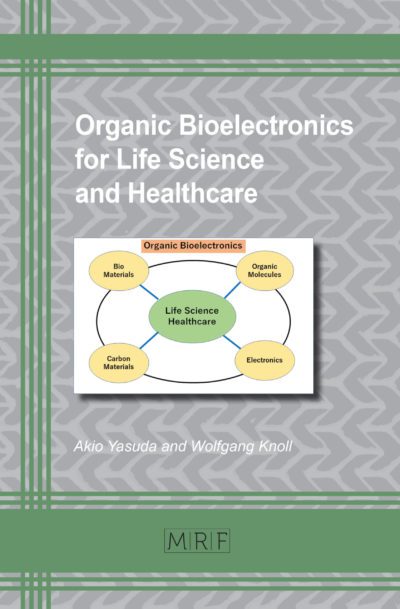On the importance of heat source modeling for controlling molten pool geometry during laser surface treatment of Ti6Al4V alloy
Maria Rosaria Saffioti, Serafino Caruso, Mariateresa Caggiano, Giovanna Rotella
Abstract. Laser surface treatment is a precise method for modifying the microstructure and surface properties of materials, including Ti-6Al-4V, by adjusting laser parameters to enhance characteristics such as wear and fatigue resistance. However, the complexity of laser-material interactions, particularly the thermal effects, introduces challenges in predicting the thermal distribution and resulting material properties. This study compares two heat source models – the conventional 3D conical Gaussian heat source model and the more recent elliptic paraboloid volumetric heat source model – for their ability to accurately simulate laser surface treatments. The models were validated by comparing numerical simulations with experimental data on thermal field and on molten pool width and penetration depth obtained from metallographic analysis. The results show that both models yield stable predictions, with the elliptic paraboloid model providing more accurate representations of the laser track profile. This model, which better adapts to elliptical heat distributions, is particularly beneficial for micro and nanoscale surface functionalization, where small discrepancies in thermal treatment can significantly affect material behavior. Additionally, a different methodology for modeling the heat source based on process temperature, rather than traditional geometric heat flux definitions, was proposed.
Keywords
Injection Moulding, Surface Functionalization, Laser
Published online 5/7/2025, 8 pages
Copyright © 2025 by the author(s)
Published under license by Materials Research Forum LLC., Millersville PA, USA
Citation: Maria Rosaria Saffioti, Serafino Caruso, Mariateresa Caggiano, Giovanna Rotella, On the importance of heat source modeling for controlling molten pool geometry during laser surface treatment of Ti6Al4V alloy, Materials Research Proceedings, Vol. 54, pp 1712-1719, 2025
DOI: https://doi.org/10.21741/9781644903599-184
The article was published as article 184 of the book Material Forming
![]() Content from this work may be used under the terms of the Creative Commons Attribution 3.0 license. Any further distribution of this work must maintain attribution to the author(s) and the title of the work, journal citation and DOI.
Content from this work may be used under the terms of the Creative Commons Attribution 3.0 license. Any further distribution of this work must maintain attribution to the author(s) and the title of the work, journal citation and DOI.
References
[1] S.A. Etesami, B. Fotovatti, E. Asadi, Heat treatment of Ti-6Al-4V alloy manufactured by laser-based powder-bed fusion: Process, microstructures, and mechanical properties correlations, J. Alloys Compd. 895 (2022) 162618. https://doi.org/10.1016/j.jallcom.2021.162618
[2] B. Fotovvati, S.A. Etesami, E. Asadi, Process-property-geometry correlations for additively-manufactured Ti–6Al–4V sheets, Mater. Sci. Eng. A, 760 (2019) 431-447. https://doi.org/10.1016/J.MSEA.2019.06.020
[3] T. Vilaro, C. Colin, J.D. Bartout, As-fabricated and heat-treated microstructures of the Ti-6Al-4V alloy processed by selective laser melting, Metall. Mater. Trans. A Phys. Metall. Mater. Sci. 42 (2011) 3190-3199. https://doi.org/10.1007/s11661-011-0731-y
[4] V. Chastand, P. Quaegebeur, W. Maia, E. Charkaluk, Comparative study of fatigue properties of Ti-6Al-4V specimens built by electron beam melting (EBM) and selective laser melting (SLM), Mater. Charact., 143 (2018), pp. 76-81, https://doi.org/10.1016/j.matchar.2018.03.028
[5] G. Rotella, M. Sanguedolce, M.R. Saffioti, L. Filice, F. Testa, Strategies for Shaping of Different Ceramic Foams, Proc. Manuf. 47 (2020) 493-497. https://doi.org/10.1016/j.promfg.2020.04.345
[6] A. Del Prete, L. Filice, D. Umbrello, Numerical Simulation of Machining Nickel-Based Alloys. Proc. CIRP. 8 (2013) 540-545, https://doi:10.1016/j.procir.2013.06.147
[7] F. Borda, A.M.I. Cosma, L. Filice, Enabling Industry 4.0 Transformation in Calabria region: Framework, Machine Interconnection and ERP Synergy, Procedia Comput. Sci. 232 (2024) 1151-1163. https://doi.org/10.1016/j.procs.2024.01.113
[8] F. Borda, A.D. La Rosa, L. Filice, F. Gagliardi, Environmental comparison of opposing manufacturing strategies at changing of energy sources, EoL approaches and shape peculiarity for an automotive component, Adv. Mater. Process. Technol. (2024) 1-21. https://doi.org/10.1080/2374068X.2024.2432724
[9] M. Sanguedolce, G. Rotella, M.R. Saffioti, L. Filice, Burnishing of AM materials to obtain high performance part surfaces, JIEM. 15 (2022) 73-89. https://doi.org/10.3926/jiem.3608
[10] Z.W. Pu, S. Caruso, D. Umbrello, Jr O.W. Dillon, D.A. Puleo, I.S. Jawahir, Analysis of surface integrity in dry and cryogenic machining of AZ31B Mg alloys. Adv. Mater. Res. 223 (2011) 439-448. https://doi.org/10.4028/www.scientific.net/AMR.223.439
[11] S. Caruso, E. Sgambitterra, S. Rinaldi, A. Gallone, L. Viscido, L. Filice, D. Umbrello, Experimental comparison of the MIG, friction stir welding, cold metal transfer and hybrid laser-MIG processes for AA 6005-T6 aluminium alloy, AIP Conf. Proc. 1769 (2016) 100004. https://doi.org/10.1063/1.4963498
[12] X. Li, J. Liang, T. Shi, D. Yang, X. Chen, C. Zhang, Z. Liu, D. Liu, Q. Zhang, Tribological Behaviors of Vacuum Hot-Pressed Ceramic Composites with Enhanced Cyclic Oxidation and Corrosion Resistance. Ceram. Int. 46 (2020) 12911–12920. https://doi.org/10.1016/j.ceramint.2020.02.057
[13] S. Caruso, D. Umbrello, Numerical and experimental validation of gas metal arc welding on AISI 441 ferritic stainless steel through mechanical and microstructural analysis. Int. J. Adv. Manuf. Technol. 120 (2022) 7433–7444. https://doi.org/10.1007/s00170-022-09208-x.
[14] F. Rubino, F. Tucci, S. Caruso, D. Umbrello, P. Carlone, An integrated numerical approach to simulate the filler deposition and the shape distortions in gas metal arc welding, CIRP J. Manuf. Sci.Technol. 45 (2023) 26-34, ISSN 1755-5817, https://doi.org/10.1016/j.cirpj.2023.05.010
[15] E.J.G. Nascimento, E. Dos Santos Magalhaes, L.E. Dos Santos Paes, A literature review in heat source thermal modeling applied to welding and similar processes. Int. J. Adv. Manuf. Tcehnol. 126 (2023) 2917-2957. 61 (2018) 256-267. https://doi.org/10.1007/s00170-023-11253-z
[16] A.P. Mackwood, R.C. Crafer, Thermal modelling of laser welding and related processes: a literature review. Opt. Laser. Technol. 37 (2005) 99-115. https://doi.org/10.1016/j.optlastec.2004.02.017
[17] J.R. Chukkan, M. Vasudevan, S. Muthukumaran, R. Ravi Kumar, N. Chandrasekhar, Simulation of laser butt welding of AISI 316L stainless steel sheet using various heat sources and experimental validation. J. Mater. Proc. Technol. 219 (2015) 48-59. https://doi.org/10.1016/j.jmatprotec.2014.12.008
[18] B. Li, J. Du, Y. Sun, S. Zhang, Q. Zhang, On the importance of heat source model determination for numerical modeling of selective laser melting of IN625. Opt. Laser Technol. 158 (2023) 108806. https://doi.org/10.1016/j.optlastec.2022.108806
[19] K. Kim, L. Lee, H. Cho, Analysis of pulsed Nd:YAG laser welding of AISI 304 steel. J. Mech. Sci. Technol. 24 (2010) 2253-2259. https://doi.org/10.1007/s12206-010-0902-6
[20] V. García-García, J.C. Camacho-Arriaga, F. Reyes-Calderón.A simplified elliptic paraboloid heat source model for autogenous GTAW process. Int. J. Heat. Mass. Transf. 100 (2016) 536-549. https://doi.org/10.1016/j.ijheatmasstransfer.2016.04.064













